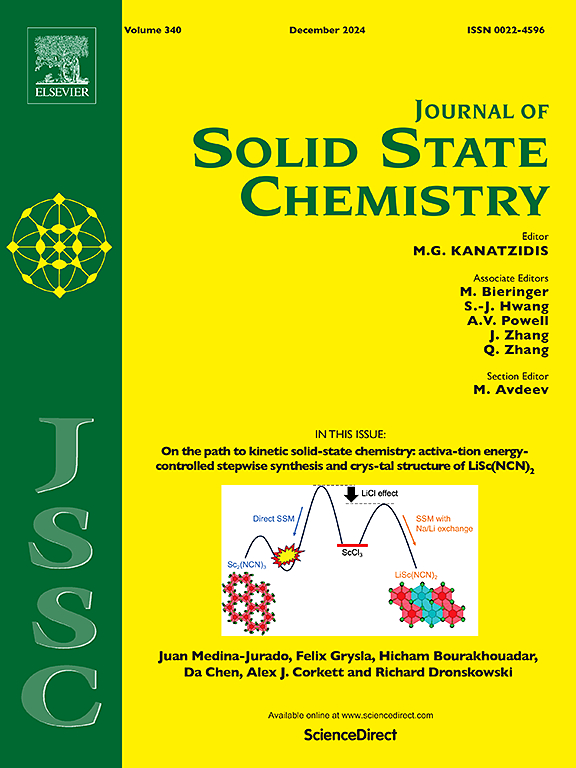Study on the iodine adsorption properties of hexaphenylsilole-triazine porous organic polymer
IF 3.2
3区 化学
Q2 CHEMISTRY, INORGANIC & NUCLEAR
引用次数: 0
Abstract
The hexaphenylsilole-based porous organic polymer (THPS), was synthesized for the first tine via a Friedel-Crafts reaction with 1,1,2,3,4,5-hexabenylthirole and cyanuric chloride in 1,2-dichloroethane under the catalysis of anhydrous aluminum muriate. The specific surface areas of Brunauer-Emmett-Teller and Langmuir reach 1579 and 2081 m2 g−1, respectively. THPS can efficiently and reversibly adsorb I2 in both the gas phase (1.94 g g−1) and the liquid phase. Because THPS has weak adsorption on water and cyclohexane, its adsorptive capacities and adsorption efficiencies in both solution are high, and up to 23.91 mg g−1 and 95.62 % in 100 mg mL−1 iodine-cyclohexane solution, 260.04 mg g−1 and 91.01 % in the 300 mg L−1 iodine-water solution. The adsorption behaviors fit the pseudo-first kinetic model, with high linear correlation coefficient (R2) of 0.9965, 0.9965, and 0.9967 in vapor at 77 °C, in iodine-cyclohexane solution, and iodine-water solution, respectively. Iodine adsorption is the result of electron transfer from THPS to iodine molecules. The adsorbed iodine can be released by heating or in ethanol. After 5 cycles, its iodine adsorption capacity and desorption efficiency of THPS did not change significantly.
六苯基硅酮-三嗪多孔有机聚合物对碘的吸附性能研究
在无水酸铝催化下,以1,1,2,3,4,5-六苯基硫和三聚氰胺为原料,在1,2-二氯乙烷中进行了Friedel-Crafts反应,首次合成了六苯基硅基多孔有机聚合物(THPS)。brunauer - emmet - teller和Langmuir的比表面积分别达到1579和2081 m2 g−1。THPS在气相(1.94 g g−1)和液相均能有效、可逆地吸附I2。由于THPS对水和环己烷有较弱的吸附作用,因此其在两种溶液中的吸附量和吸附效率都很高,在100 mg mL−1碘-环己烷溶液中吸附量分别为23.91 mg g−1和95.62%,在300 mg L−1碘-水溶液中吸附量分别为260.04 mg g−1和91.01%。在77℃蒸汽、碘-环己烷溶液和碘-水溶液中,吸附行为符合准第一动力学模型,线性相关系数R2分别为0.9965、0.9965和0.9967。碘的吸附是电子从THPS转移到碘分子的结果。吸附的碘可以通过加热或在乙醇中释放出来。循环5次后,THPS对碘的吸附能力和解吸效率无明显变化。
本文章由计算机程序翻译,如有差异,请以英文原文为准。
求助全文
约1分钟内获得全文
求助全文
来源期刊

Journal of Solid State Chemistry
化学-无机化学与核化学
CiteScore
6.00
自引率
9.10%
发文量
848
审稿时长
25 days
期刊介绍:
Covering major developments in the field of solid state chemistry and related areas such as ceramics and amorphous materials, the Journal of Solid State Chemistry features studies of chemical, structural, thermodynamic, electronic, magnetic, and optical properties and processes in solids.
 求助内容:
求助内容: 应助结果提醒方式:
应助结果提醒方式:


